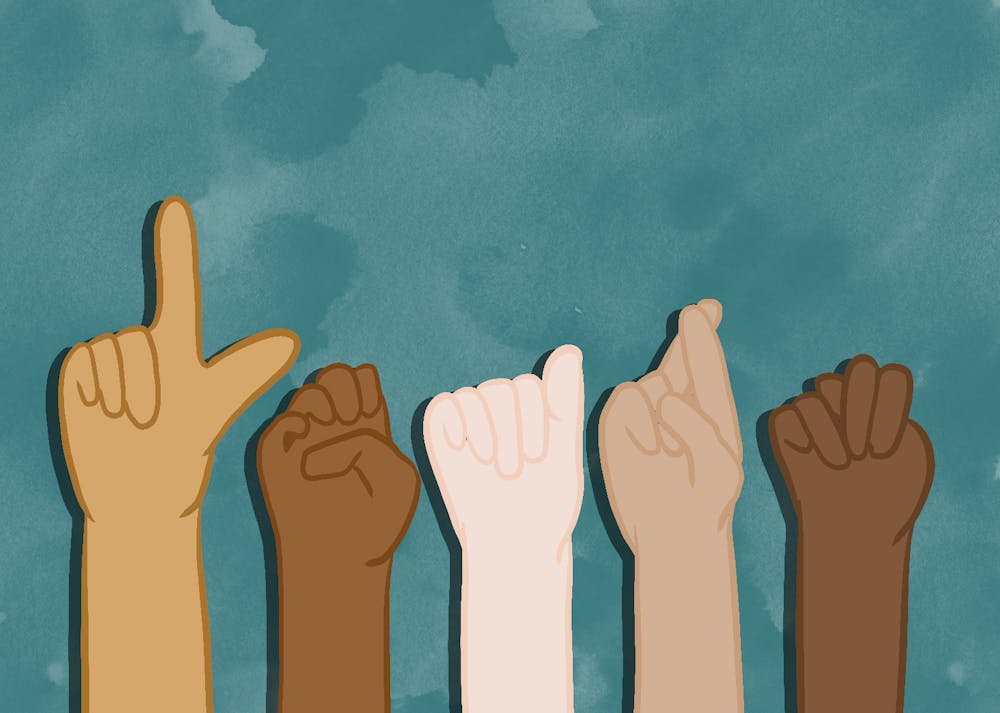In the era of binge-watching and endless scrolling, language students are turning to film and streaming services to enhance their learning experience.
At ASU, American Sign Language students are watching videos to gain a deeper understanding of the nuances of the language.
Lindsey Patterson, an ASL professor at ASU, has her masters in ASL and Deaf studies from Gallaudet University, and over 20 years of signing and interpreting experience. She frequently assigns videos to her students to review for homework.
"It’s the one way that (my students) can see how the Deaf community interacts with each other that I can’t provide them in the classroom," Patterson said. "To see the language truly in action is hugely beneficial for students to gain not only their receptive skills but also their expressive skills."
Patterson added that often the media her students watch exposes them to vocabulary not included in the curriculum or used in the classroom.
"One thing about the language (ASL) is it’s very visual. The more you’re exposed to it, the more you’re going to be able to pick it up," said Sydney Brooks, a sophomore studying speech and hearing science and an ASL 101 teaching assistant. "It’s one thing seeing a sign used in a classroom setting, it’s another to see it used in public and used in social situations where you may not have thought to use a sign a certain way."
The strategy recommended to students learning ASL is to first watch a given episode or clip with no captions to exercise their receptive skills. Then, they watch again with captions to see what they knew and what they missed.
DPAN.TV is the platform frequently used in Patterson’s class. The platform offers newscasts, reality shows and more by Deaf creators.
Many Deaf creators are also on YouTube, Instagram and even TikTok, providing even more easily-accessible content for ASL students to consume.
"I'm definitely on Deaf TikTok," said Kathleen Crawford, an art history sophomore studying in Patterson's ASL 102 class. For her, the major benefit of learning on social media is convenience.
"You can look it (ASL) up on basically any platform," Crawford said.
Outside of DPAN.TV and content produced by ASL creators on social media, streaming platforms are slowly incorporating more ASL into their content, which has the potential to give Deaf culture visibility to students and people outside of the ASL community. This has been seen recently on HBO's series "The Last of Us," with the character Sam played by deaf actor Keivonn Woodard.
Patterson and Crawford both recommend "Deaf U" on Netflix for those interested in learning more about ASL. "Deaf U" is a reality series about Deaf and hard-of-hearing students at Patterson's alma mater Gallaudet University.
"It’s weirdly addicting and fascinating to watch these college kids’ lives," Patterson said.
Patterson pointed out that while some movies found on popular streaming sites that focus on deaf characters, such as "CODA" on Apple TV+, may not teach specific signs and vocabulary well as compared to DPAN.TV, they are good introductions to Deaf culture and signing.
Even well-known reality shows can offer ASL-learning opportunities and introduce audiences to Deaf culture. In season 31 of "Dancing with the Stars," contestant Daniel Durant is a well-known deaf stage and film actor who starred in "CODA." Durant is not the first deaf contestant on "Dancing with the Stars" as he follows season six contestant, Marlee Matlin and season 22 champion, Nyle DiMarco.
"Instead of not having the interpreter on screen, ("Dancing with the Stars") had the interpreter on screen still," Brooks said.
To Brooks, this made the show more inclusive to Deaf and hard-of-hearing viewers. When media that tries to portray Deaf culture excludes interpreters from shots, “it’s like having someone speaking a different language but not putting the captions on.”
Brooks was also inspired by how Durant incorporated his experience as a person who is deaf into his week eight jazz dance when he and his partner danced through an intentionally silent portion of the song "Enjoy the Silence."
Sophia is a senior studying journalism and mass communication. This is her sixth semester with The State Press. She has also worked at Nomads with Notebooks and Blaze Radio and interned for The Arizona Republic.




